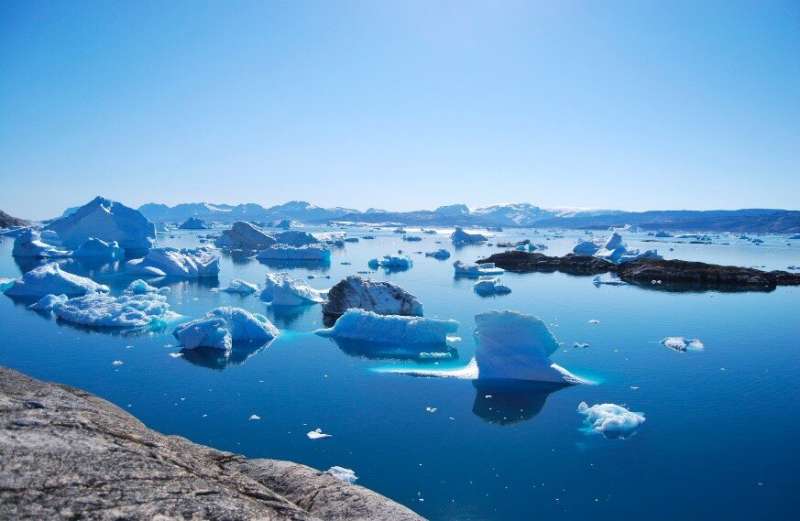This article has been reviewed according to Science X's editorial process and policies. Editors have highlighted the following attributes while ensuring the content's credibility:
fact-checked
trusted source
proofread
How sea-ice anomalies in the Barents–Kara Sea are modulated by the 'warm Arctic–cold Eurasia' pattern

"Warm Arctic—cold Eurasia" is one of the most significant patterns of winter climate system changes in the mid-high latitudes of the Northern Hemisphere. In winter 2020/21, this large-scale pattern underwent a significant and intense subseasonal reversal between the early and late winter. At the same time, the sea-ice anomalies in the Barents–Kara Sea changed from being significantly negative in early winter to positive in late winter. For the slow-varying process of winter sea ice, the rapid freezing or melting of sea ice in winter is worthy of attention.
New findings from the team of Professor Zhicong Yin at Nanjing University of Information Science and Technology reveal the close relationship between, and key mechanism of, the subseasonal variation of Barents–Kara sea-ice anomalies in winter and the "warm Arctic–cold Eurasia" pattern.
Furthermore, a more comprehensive schematic of the subseasonal reversal of the air–ice system in the Arctic–Eurasia region was depicted, which together contribute to a better understanding and predictability of extreme climate at mid-low latitudes.
WACE [the "warm Arctic–cold Eurasia" pattern] is a phenomenon whereby the large-scale temperature gradient weakens, which can lead to an adjustment of atmospheric baroclinicity. Driven by such remarkable high-latitude atmospheric pattern reversals, an associated subseasonal transition of the sea-ice anomaly also occurs in the BKS [Barents–Kara Sea].
Under a warm Arctic and enhanced Ural high, abnormal downward turbulent heat flux and increased downward infrared radiation in the BKS are conducive to sea ice melting. The surface southerly wind drives the sea ice to drift from the thin to perennial ice area and further enlarges the open ocean surface.
The opposite mechanism occurs in the opposite phase of WACE, causing positive BKS sea-ice anomalies. When WACE reverses on the subseasonal scale, the above mechanisms occur in early and late winter, respectively, resulting in a significant subseasonal transition of BKS sea-ice anomalies.
More importantly, in the last decade, with a more frequent reversal of WACE, the subseasonal transition between early winter and late winter in BKS sea ice has enhanced. WACE and the BKS sea ice show consistent trend changes and correspond to the intensity of subseasonal variation. In the context of global warming, the trend changes of "Arctic warming–Eurasian cooling" and Arctic sea ice are still uncertain, whose prediction faces huge challenges.
Whether subseasonal variation in BKS sea ice will continue to be as strong as that shown in the last decade under different warming scenarios in the future is worthy of further investigation, thus revealing the role of global warming in extreme events.
The paper is published in the journal Atmospheric and Oceanic Science Letters.
More information: Yijia Zhang et al, Subseasonal transition of Barents–Kara sea-ice anomalies in winter related to the reversed warm Arctic–cold Eurasia pattern, Atmospheric and Oceanic Science Letters (2023). DOI: 10.1016/j.aosl.2023.100392. www.sciencedirect.com/science/ … ii/S1674283423000788
Provided by Chinese Academy of Sciences




















